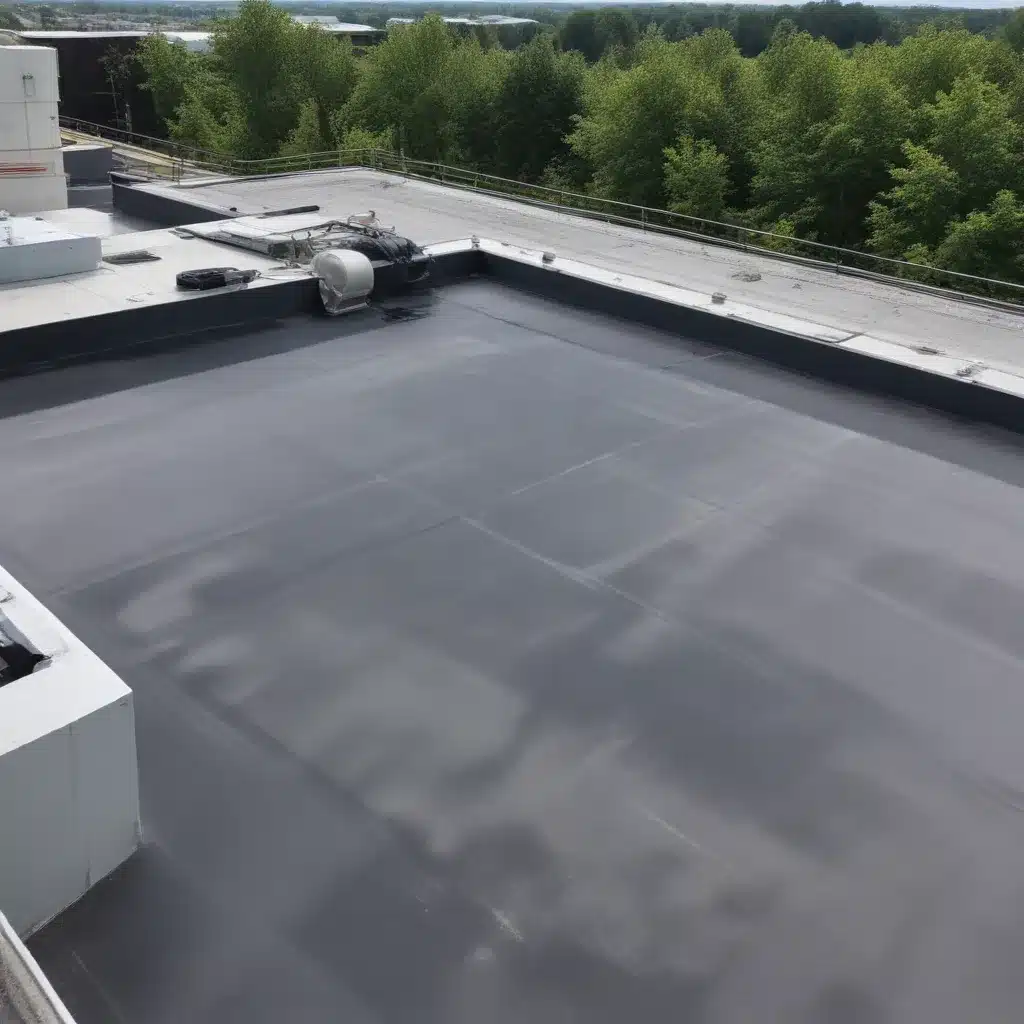
Understanding the Complexities of Flat Roofs
As a seasoned roofing professional, I’ve had the privilege of working with a diverse range of clients, from residential homeowners to large-scale industrial facilities. One of the most unique and challenging roofing systems I’ve encountered is the flat roof, particularly in the industrial sector. These expansive, low-slope structures pose a unique set of maintenance and repair requirements that deserve special attention.
Flat roofs are commonly found on warehouses, factories, commercial buildings, and other industrial facilities. Unlike their pitched counterparts, flat roofs present their own set of challenges, from pooling water to premature aging of the roofing membrane. Proper maintenance and timely repairs are crucial to ensuring the long-term performance and integrity of these roofs, protecting both the building and its contents.
Combating Water Pooling and Drainage Issues
One of the primary concerns with flat roofs is the propensity for water pooling, which can lead to numerous issues if left unchecked. Inadequate drainage or clogged gutters and downspouts can cause standing water to accumulate, increasing the risk of leaks, mold growth, and even structural damage.
To address this challenge, industrial facility managers should regularly inspect their flat roofs, clearing away any debris or obstructions that may impede proper drainage. Investing in regular professional roof inspections can also help identify and resolve any drainage problems before they escalate.
In some cases, the roofing system may need to be modified to enhance water runoff. This could involve installing additional drains, creating strategically placed slopes, or even considering a roof replacement with a more effective drainage design.
Mitigating Premature Aging of Roofing Membranes
Flat roofs often rely on a continuous roofing membrane, such as EPDM, PVC, or modified bitumen, to provide a waterproof barrier. These materials, while durable, can be susceptible to premature aging and degradation due to the unique stresses they face on a flat roof.
Exposure to UV radiation, extreme temperatures, and environmental pollutants can all contribute to the breakdown of these membranes over time. Regular maintenance, including the application of protective coatings or the installation of reflective surfaces, can help extend the lifespan of the roofing system.
It’s also crucial to address any punctures, cracks, or seam failures promptly to prevent water infiltration and further deterioration. Our team of experienced roofers is well-versed in identifying and repairing these types of membrane issues, ensuring the continued performance and protection of the industrial facility.
Adapting to Unique Structural Considerations
Flat roofs often need to support heavy equipment, such as HVAC units, telecommunications infrastructure, or even solar panels. These additional loads require specialized structural considerations during the design and installation phases, as well as ongoing monitoring and maintenance.
Regular inspections by qualified professionals can help identify any signs of stress or structural fatigue, allowing for proactive repairs or reinforcements before more significant issues arise. It’s also important to ensure that any planned modifications or additions to the roof are reviewed by a structural engineer to maintain the overall integrity of the system.
Prioritizing Safety and Compliance
Maintaining a flat roof in an industrial setting requires a keen focus on safety and compliance with industry regulations. Rooftop access, fall prevention measures, and proper personal protective equipment (PPE) are all critical considerations for both maintenance personnel and any contractors working on the roof.
Industrial facility managers should have comprehensive safety protocols in place, including procedures for accessing the roof, conducting repairs, and handling hazardous materials. Proper training and the use of appropriate safety equipment, such as harnesses, guardrails, and secure ladders, can help mitigate the risks associated with working on a flat roof.
Additionally, compliance with local building codes, fire safety regulations, and environmental guidelines is paramount. Staying up-to-date with the latest industry standards and best practices can help ensure that the flat roof system not only functions effectively but also meets all necessary safety and regulatory requirements.
Embracing Technological Innovations
The roofing industry is constantly evolving, with new materials, techniques, and technologies emerging to address the unique challenges of flat roofs in the industrial sector. As a seasoned roofing professional, I recommend that industrial facility managers stay informed about the latest advancements and consider how they can be incorporated into their roofing strategies.
For example, the use of infrared thermography can help identify hidden moisture issues within the roofing system, allowing for targeted repairs before more extensive damage occurs. Advancements in roofing membranes, such as self-healing or reflective coatings, can also enhance the durability and energy efficiency of flat roofs.
By embracing technological innovations and working closely with experienced roofing contractors, industrial facility managers can ensure that their flat roofs remain reliable, cost-effective, and environmentally responsible throughout their lifespan.
Conclusion
Maintaining a flat roof in the industrial sector requires a comprehensive understanding of the unique challenges and a proactive approach to address them. From combating water pooling and premature membrane aging to adapting to structural considerations and prioritizing safety, the roofing professionals at Roofers in Northampton are equipped to help industrial clients navigate these complexities.
By collaborating with experienced roofing experts, industrial facility managers can ensure that their flat roofs remain in optimal condition, protecting their valuable assets and minimizing the risk of costly repairs or unexpected downtime. Remember, a well-maintained flat roof is not only a practical necessity but also a strategic investment in the long-term success and sustainability of your industrial operations.

